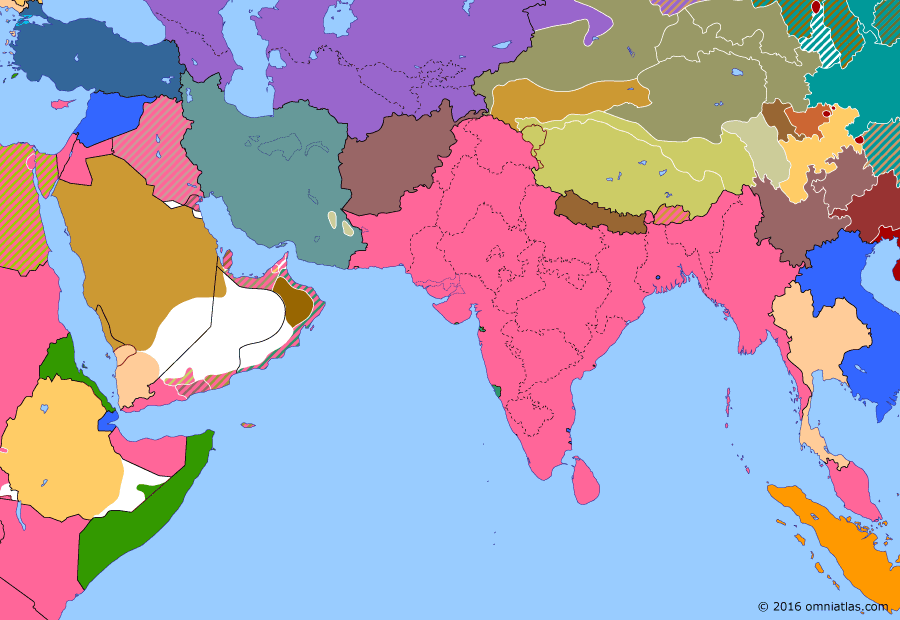Southern Asia 1934: Soviet invasion of Xinjiang
16 March 1934
16 Mar 1934
Arrival of the New Order
1880–1914 Pax Britannica
1914–1917 Great War in the Middle East
1917–1918 Fall of the Ottoman Empire
1918–1923 Anglo-French Overreach
1923–1934 Rising Nationalism
1934–1940 Arrival of the New Order
1940–1941 World War II: The Middle Eastern Theater
1941–1945 World War II: The South-East Asian Theater
1945–pres Independence
Soviet invasion of Xinjiang
The 1933 invasion of Xinjiang by the Nationalist Chinese-allied Ma family alarmed the Soviet Union, which responded by mounting its own invasion of the province to support its besieged governor. With the help of their modern army, the Soviets expelled the Ma, effectively turning Xinjiang into a satellite state.
